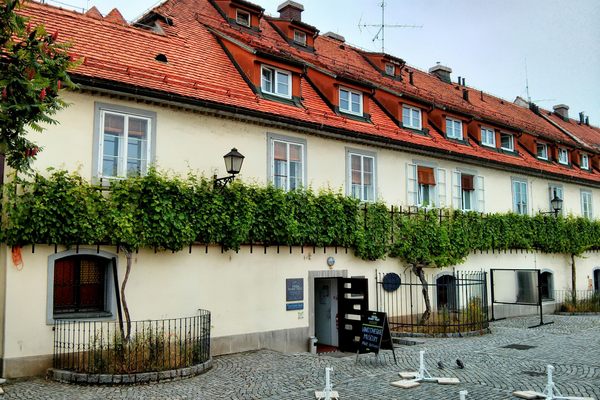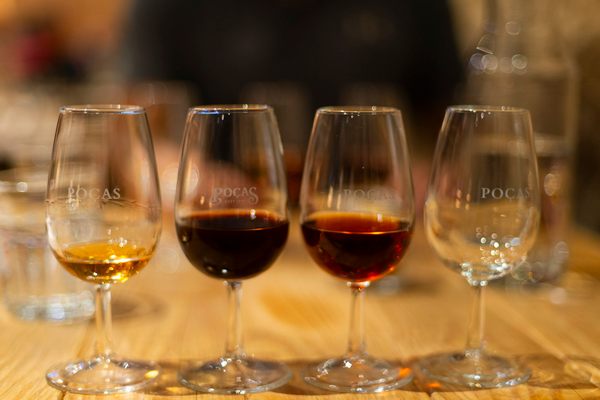AO Edited
Gastro Obscura
Mother Vine Scuppernong Wine
This sweet Southern elixir comes from what may be the oldest grape vine in North America.
As 16th century European explorers landed on the shores of modern-day North Carolina, they continually wrote home about the grapes. In 1584, a British captain described a land “so full of grapes as the very beating and surge of the sea overflowed them.” The following year, another globetrotter noted “grapes of such greatness, yet wild, as France, Spain, nor Italy hath no greater.” These strangers were captivated by none other than muscadines (Vitis rotundifolia), America’s oldest known species of native grape. And where there are grapes, wine is never far away.
On Roanoke Island, the pioneers encountered one particularly robust tangle of grape bush, now known as the Mother Vine. Pickers could literally shake the ripe fruit off the vine, yielding plentiful quantities of exceptionally sweet, slightly musky juice housed in protectively thick, bitter skin. As such, its popularity grew, and locals renamed the grapes “scuppernong” due to its proximity to the Scuppernong River. After more than four centuries, this seminal vine has a two foot–thick trunk and has, at times, stretched more than half an acre. Those who want to see the impressively old vine can simply visit its home in Manteo.
If you’d like to taste its bounty, however, head to the Duplin Winery in Rose Hill. In the early 2000s, Duplin, the state’s oldest and largest winery, began experimenting with several thousand clippings taken directly from the Mother Vine herself. Of 5,000 attempted, just over 100 set roots, and from them grew Duplin’s very own Mother Vine vineyard. Scuppernong grapes from the transplanted Mother Vine are harvested in September, reaching markets by early June each year. These white wines tend to have a distinct sweetness balanced by acidity and the historic grape’s characteristic musky flavor.
Know Before You Go
The winery offers tours and tastings. On the way, don't forget to stop by the "world's largest frying pan."
















Follow us on Twitter to get the latest on the world's hidden wonders.
Like us on Facebook to get the latest on the world's hidden wonders.
Follow us on Twitter Like us on Facebook